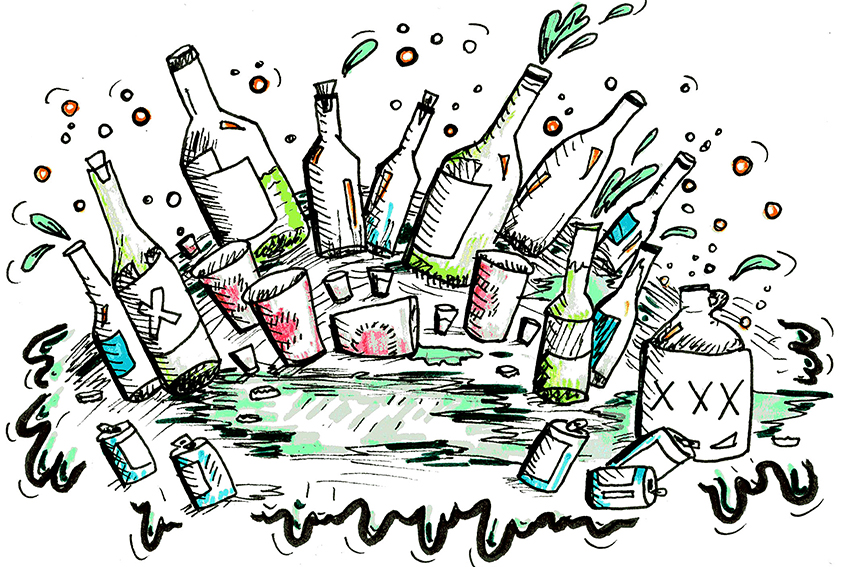With RoundUp taking place this weekend, I have a feeling that I will be consuming a fair amount of cheap beer and trash can punch. How much of a strain will a weekend of partying put on my body?
—Beer Pressure
Adult beverages may provide liquid confidence, boost your sense of humor and give you “moves like Jagger” on the dance floor. Your body, however, has a not-so-happy view of happy hours.
Your liver deserves lots of love after a night out. After your stomach and small intestine absorb alcohol, they quickly ship it to the liver for breakdown.
Enzymes in the liver metabolize alcohol to acetaldehyde, a highly toxic substance that alters the function and structure of liver cells. Chronic overconsumption of alcohol can lead to inflammation of the liver, fatty liver disease, cirrhosis and even liver cancer. Acetaldehyde is also responsible for the sweating, flushing, nausea and vomiting that accompanies heavy drinking, according to a 1998 article published in Alcohol Health and Research World.
Regardless of how many shots you’ve taken or margaritas you’ve downed, your liver can only work so fast, according to The National Institute on Alcohol Abuse and Alcoholism. Usually, your consumption is quicker than metabolism — leading to an increased blood alcohol concentration and drunkenness.
The number of drinks you can consume before feeling the effects of alcohol is dependent on your gender, weight, genetics, current medications and the amount of food you’ve eaten.
Although personal eating habits affect how quickly alcohol is absorbed, the metabolism of alcohol has priority over that of all other macronutrients, according to a paper published by The Proceedings of the Nutrition Society. Booze consumed on top of a typical diet leads to an increase in body fat. Instead of burning the carbohydrates and fat that your body gets from food, your body puts these macronutrients straight into storage and focuses on getting rid of the alcohol.
“The other piece of it too is that college students kind of forget is that alcohol is a calorically dense subject,” said Monica Milonovich, a registered dietitian and lecturer in the Department of Nutritional Sciences.
Alcohol contains seven calories per gram. For reference, carbohydrates contain four calories per gram, and fats have nine per gram.
That’s not counting calories from sugary mixers such as soda, juice or add-ins such as grenadine, liqueurs or sweet-and-sour mix — a terrible reality for cocktail connoisseurs.
“It’s setting you up for a risk for obesity,” Milonovich said.
Some surprising news: The definition of one drink is smaller than you might have thought. A 12-ounce beer, five ounces of wine, or 1.5 ounces of an 80-proof liquor all are considered one alcoholic beverage. Even more shocking news: Men should consume no more than two drinks per day, and women should consume no more than one, according to the 2015–2020 dietary guidelines published by the U.S. Department of Health and Human Services and the Department of Agriculture..
Cashing in your weekly drink allowance on “Thirsty Thursdays” doesn’t count either.
“You don’t get seven drinks because you didn’t drink the week prior,” Milonovich said.
This wouldn’t be an adequate article about alcohol if it didn’t promote safe consumption. As most students know, alcohol impairs cognitive function.
“In the college situation, it’s not really nutrition that I’m so much worried about. It’s usually the social behavior that I get a little more concerned with,” Milonovich said. “Thank God for the metro.”
Alcohol has a larger influence on nutrition than you’d think. Drink responsibly so you can round up memories instead of pant sizes.

















